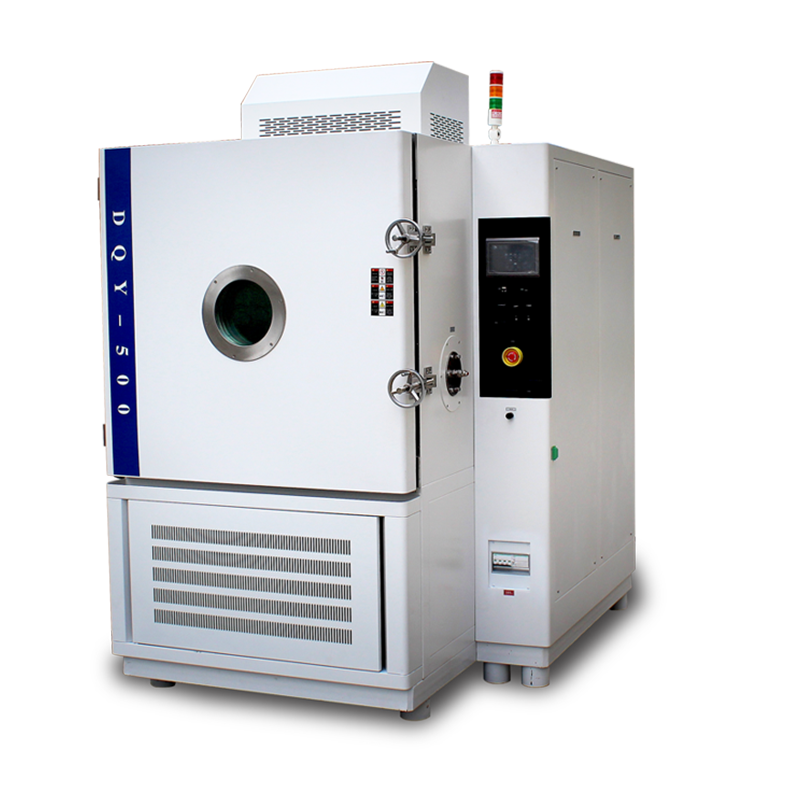In today's fiercely competitive market, product quality and reliability have become key factors for enterprise survival and growth. To ensure products can function properly under various environmental conditions, companies must prioritize environmental reliability testing. High-low temperature and low-pressure test chambers, as essential environmental reliability testing equipment, play a crucial role in enhancing product quality and dependability.
I. The Importance of Environmental Reliability Testing
- Improving Product Quality
Environmental reliability testing simulates various real-world conditions that products may encounter, such as high/low temperatures, humidity, vibration, and shock. By testing products under these conditions, enterprises can identify potential issues and defects, enabling timely improvements and optimizations to enhance overall product quality.
For example, in the automotive industry, components must perform reliably across diverse climates. Environmental reliability testing evaluates part performance under extreme temperatures and humidity, ensuring they function flawlessly in real-world conditions and improving vehicle quality and reliability.
- Extending Product Lifespan
Environmental reliability testing helps companies understand product durability and stability under different conditions, allowing them to take measures to prolong service life. Long-term testing reveals aging patterns and wear characteristics, enabling design and material optimizations to enhance endurance and dependability.
For instance, in the electronics industry, temperature and humidity can degrade performance and shorten lifespan. Environmental reliability testing assesses performance changes under varying conditions, guiding improvements to boost durability and extend product life.
- Reducing After-Sales Costs
By detecting potential issues before product release, environmental reliability testing minimizes the likelihood of field failures, reducing after-sales service demands and costs.
For example, home appliances like air conditioners may underperform in extreme heat. Testing ensures they operate reliably in real-world environments, cutting post-sale repair expenses.
- Enhancing Competitive Edge
As consumers increasingly prioritize quality and reliability, companies must meet these expectations to stay competitive. Environmental reliability testing builds consumer trust and market recognition, strengthening a company’s position.

In aerospace, for instance, aircraft safety and reliability are paramount. Testing ensures components function under extreme conditions, boosting safety and competitive advantage.
II. The Role of High-Low Temperature and Low-Pressure Test Chambers
-
Simulating High-Altitude Conditions
These chambers replicate low-pressure environments at high altitudes, where reduced atmospheric pressure challenges product performance. Testing under such conditions ensures products like aircraft components maintain functionality and sealing integrity in flight. -
Verifying Product Sealing Performance
Sealing is critical for reliability in harsh environments. Low-pressure testing checks whether seals meet standards, preventing failures in humid or high-altitude settings—essential for electronics, automotive parts, and aerospace applications. -
Improving Environmental Adaptability
Testing under low pressure reveals how products perform and adapt, guiding design and material optimizations to enhance resilience across diverse conditions.

III. How Enterprises Can Leverage Testing Effectively
-
Develop a Structured Test Plan
Tailor plans to product specifications and usage environments, covering temperature, humidity, vibration, shock, and low-pressure scenarios to ensure comprehensive validation. -
Select Advanced Testing Equipment
Choose high-precision, multi-functional test chambers that meet industry standards and testing needs. -
Train Testing Personnel
Equip staff with expertise in operating equipment, interpreting results, and adhering to testing protocols to ensure accuracy and reliability. -
Implement a Robust Quality Management System
Integrate environmental reliability testing into quality control frameworks, from planning to analysis, to drive continuous improvement and market competitiveness.
Conclusion
High-low temperature and low-pressure test chambers, alongside environmental reliability testing, are indispensable for elevating product quality and reliability. Enterprises must prioritize these tests, adopt advanced equipment, refine testing protocols, and foster expertise to thrive in an increasingly demanding market. Only by relentlessly pursuing excellence in product performance can companies secure long-term success.














